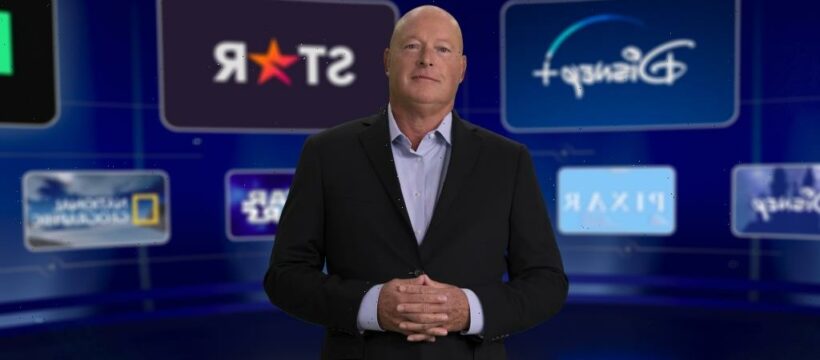Not every marketer is likely to get its commercials on a new ad-supported version of Disney+.
The popular streaming service — home to Marvel movies, the “Star Wars” series and hours of signature kids’ programming — is about to unveil a new ad-supported tier, part of a broader move by big entertainment companies like Disney to lure new subscribers to its broadband entertainment hubs with cheaper subscription levels. Indeed, the new option is one of the most-anticipated developments of the looming TV “upfront,” when TV networks try to sell the bulk of their commercial inventory for the next programming cycle.
But Disney is being careful, according to two media buyers with knowledge of recent discussions between the company and advertising agencies, wary of overwhelming the streaming outlet with a glut of ads that might obscure the service’s family-friendly environment.
These executives say Disney has already signaled to agencies that the new version of Disney+ will not accept alcohol or political advertising at its launch. What’s more, the Disney service will also not take ads from rival outlets or entertainment studios, in a bid to prevent rivals from luring its subscribers amid a fierce round of Hollywood’s streaming wars. According to the two media buyers, Disney will also be cautious about running commercials alongside shows aimed at pre-school audiences, and will no run ads at all when an individual user profile in control of the viewing experience indicates a young child is watching.
Disney declined to make executives available for comment. Media buyers indicated they were a little surprised by the amount of control the company is exerting over the potential ad roster for the service, but also noted the dynamic might create a sense of scarcity for Disney+ commercial inventory, which could in turn increase demand from marketers interested in the service.
Disney is being competitive in other ways as well. Ads on Disney+ will run an average of four minutes per hour or less, according to a person familiar with the matter. That means the service would run fewer ads per hour than NBCUniversal’s Peacock, which launched with a vow to run no more than five minutes of ads each 60 minutes, and would also be competitive with Warner Bros. Discovery’s HBO Max, which has tried to keep the number of commercials per hour to four. The Disney+ ad load will be significantly lighter than that of its sister streaming outlet Hulu, which has been clocked in recent years running as many as 9 to 12 ads per hour, according to a February 2022 report from MediaRadar.
Disney has long tried to keep its youngest viewers from being inundated with commercial messages. Its flagship Disney Channel cable network does not accept traditional ads, only sponsorship messages that tie the product being pitched to the cable network’s programming. Meanwhile, Disney Junior, aimed at younger children, has typically not run commercials at all.
Madison Avenue is eager to spray commercials around a bevy of new ad-supported streaming outlets that offer some of the entertainment world’s most buzzed-about properties. With more viewers leaving traditional TV and watching their favorite scripted dramas and comedies through streaming, big advertisers feel they have to follow their customers. But one of the reasons the streaming outlets remain popular is because they run few commercials — and, sometimes, none. As such, Disney and others will have to maintain a balancing act, keeping subscribers from feeling deluged with ads while giving sponsors some opportunity to make their pitch.
Media companies have been wary in past years about serving up ads to streaming crowds, mindful that rivals like Netflix and Amazon were offering premium TV experiences with an explicit promise not to interrupt them with commercial messages. But in the first half of 2022, such bets may be off.
HBO Max is already running commercials to consumers who opt for a lower-priced tier that includes advertising. Even before it became part of Warner Bros. Discovery, HBO Max had unveiled plans to run so-called “pre-roll” ads ahead of HBO movies. NBCUniversal recently announced new, more intrusive formats for Peacock, including one effort that could “frame” a streaming selection with an advertiser’s message. And Netflix has indicated that it, too, will embrace an ad-supported service in months to come.
Such decisions come as Wall Street is scrutinizing the growth of streaming overall. Netflix shares fell precipitously more than a week ago after the streamer disclosed subscriber losses in the first quarter and said it anticipated more in the second. Meanwhile, as more media companies launch streaming services to court viewers who want to watch their favorite shows at times of their own choosing, the competition for each subscriber has grown even more intense.
Disney executives appear enthusiastic about the ad-supported venture. An ad-supported tier on Disney+ “is going to give us the ability to reach an even more broad audience as we expand Disney+ across multiple price points,” said Bob Chapek, Disney’s CEO, speaking to investors last Wednesday. “And using some of our other services, we can see the additive nature of an ad-driven service that enables us to keep the price lower. Of course, that’s made up for by the additional revenue that we would get per user on the advertising spending.”
The Disney+ ban on rival entertainment services may seem surprising, as many media companies accept movie trailers and commercials from rivals like Netflix, Amazon and Apple. But Disney has been picky. In 2019, the company said it would no longer run ads from Netflix on entertainment networks like ABC, Freeform and FX, and that its decision to run commercials from other rival services would hinge on whether the advertiser had broader relationship with Disney that could encompass not just advertising, but such things as distribution or programming. That policy appears to have come to an end, however. When it comes to its streaming outlets, however, Disney won’t accept commercials from their competitors.
Source: Read Full Article
